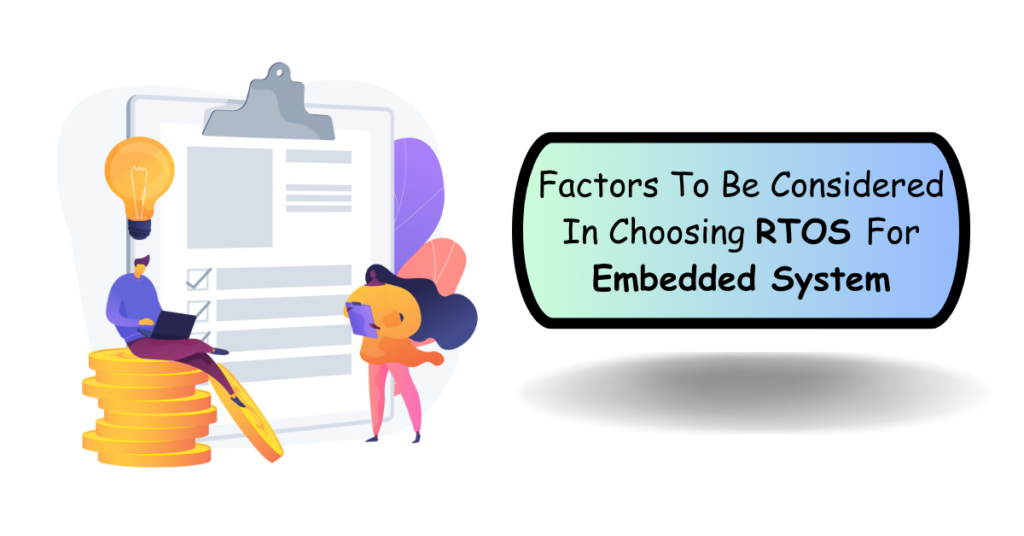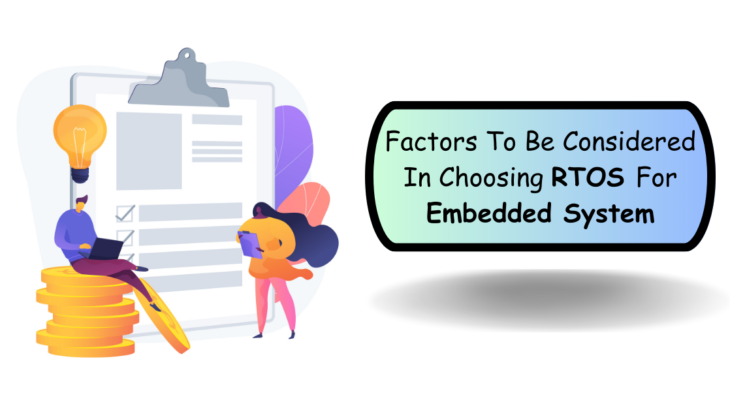
Real-Time Operating Systems (RTOSs), which gained prominence in the 1990s, offer numerous technical advantages for diverse embedded and real-time applications. The key advantages of RTOS are rapid and compact code execution, predictable behavior, extensive semiconductor compatibility, organized design methodologies, and the ability to promote software reusability through encapsulation.
If you consider the embedded software development services, the developer generally adopts a microkernel architecture for RTOS, with the scheduler as a pivotal component. The RTOS scheduler is responsible for selecting which thread to execute on each CPU within the system at any moment. Hence, enhancing the system design with precision often involves establishing a robust yet straightforward real-time scheduler. Selecting an RTOS for production systems involves more than technical fundamentals.
When making this choice, product teams need to consider various aspects, including business considerations, software engineering, and long-term sustainability. Therefore, this blog will explore these considerations briefly.
Business Considerations:
The primary factors businesses should consider when selecting an RTOS are licensing models, restrictions on modifying the source code, and industry certifications. These three elements are connected, as they mutually impact one another. When a product’s specifications necessitate adaptability, the decisions regarding licensing and certification can be significantly influenced. Licensing options encompass open-source, commercial, and mixed versions.
Typically, commercial licenses authored by businesses tend to have their ownership, restricting any alterations or redistribution of the RTOS source code. However, mixed licensing usually happens when RTOS includes commercial and open-source licensing due to the inclusion of third-party libraries. The choice of licensing fundamentally influences the ability to modify and share the source code.
The innovation process can be influenced by the constraints imposed by licensing models and the availability of source code that can be modified. Open source licensing allows kernel modification and actively encourages contributions to modify, benefiting the technical community with advancements. In contrast, commercial licensing models frequently restrict the potential for modification. Hence, it is essential to consider business licensing associated with the RTOS.
Software Engineering Considerations:
First and foremost in the software engineering aspect is the compatibility of the RTOS with the hardware platform and architecture of the target system. It’s essential to ensure that the RTOS supports the specific microcontroller or processor and any peripherals or custom hardware interfaces required for the application.
Second, the RTOS’s real-time capabilities must align with the project’s requirements. Engineers should assess whether the RTOS can meet the application’s timing constraints, whether they are hard, soft, or firm real-time requirements. It involves examining task scheduling, interrupt handling, and response times.
Another crucial aspect is the ease of development and debugging. Software engineers should evaluate the availability of development tools, debugging support, and the overall developer-friendliness of the RTOS. A well-documented and user-friendly RTOS can significantly streamline the development process and reduce debugging efforts.
Considerations For Long-Term Viability:
The last yet equally crucial factor to consider is the RTOS’s long-term sustainability, which is ensured through robust support systems, widespread adoption, and resilience. These three attributes give IoT developers the confidence that the chosen RTOS will remain accessible in the future, a vital aspect when designing products with a moderate to extended lifespan. Such products will inevitably demand ongoing maintenance, including feature updates and adapting to evolving security threats. Having the assurance of an RTOS with a well-established track record minimizes the risks associated with product development and maintenance, resulting in smoother product delivery and upkeep processes.
The next occasion, when the product team encounters a decision regarding an RTOS, utilizes these fundamental considerations to enhance confidence in the selection process. Approach Sunstream for the best embedded Linux development services to choose the right RTOS for your embedded system in this ever-changing technical world.




 +1.585.935.7123
+1.585.935.7123 +91-804-148-6861
+91-804-148-6861